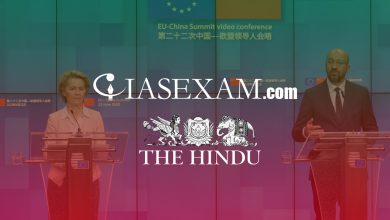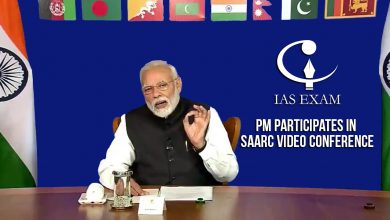A multilateral alternative, by Asia
The Escalations of tensions between USA and Iran provides India and China with a chance to present an alternative world order:
After a gap of 200 years, Asian economies are again larger than the rest of the world’s combined. As India and China resolve their border dispute, Asia is providing the multilateral alternative to a world divided by values, and no longer by ideology.
The ‘Asian Century’
The phrase ‘Asian Century’ is said to have arisen in the 1988 meeting between Chinese leader Deng Xiaoping and former Indian Prime Minister Rajiv Gandhi, re-establishing relations after the India China border conflict in 1962. It responds to the reemergence of the two countries, leveraging size and technological competence to shape a new order that reflects their civilizational values which are distinct from those of the West.
In the recent past:
- China, in 2013, after attaining 15% of global wealth, announced the multilateral Belt and Road Initiative (BRI) and in 2014, launched the Asian Infrastructure Investment Bank, challenging the global governance paradigm.
- In 2015, emerging India established the International Solar Alliance, laying out a distinct global sustainable development framework, and seeking a triumvirate.
The United States has recognized the ‘Asian Century’ bypassing multilateralism; its direct dealings with China and India and the Indo Pacific construct are examples. The way the U.S. defined human rights solely in political and procedural terms, withdrew from climate change after shifting the burden onto developing countries and the forced inclusion of intellectual property rights into the trade regime illustrate the colonial origins of current multilateralism now being questioned by even its proponents and not just by Asia.
New Frameworks
The decisive shift responds both to the Asian growth engine and to Asian technology. Global competition is moving away from country-specific actions to fragmented competition, transformed by global value chains accounting for three quarters of the growth in global trade over the 20year period: 19932013. There is no provision in global trade rules for company specific concerns where the global digital economy rather than countries are determinants of wealth and power. Imposing U.S. determined national security standards on the world has led to only a handful of countries agreeing to ban Huawei 5G technology, has angered Europe over sanctions on companies building a gas pipeline from Russia; sanctions on Iran have affected India’s interests, impacting long term relations and forcing a tacit choice between the two systems.
Potential of BRI
The BRI provides a strategic framework for new global institution building as its scope is as wide as multilateral treaties. For example, state owned enterprises in infrastructure sectors in the BRI, with backing from national banks, are contributing to internationalization of the Renminbi, enhancing China’s role in global economic governance.
With the speed and scale of such change, rising Asia remains wary of China and is eager, as is China, that India joins the Regional Comprehensive Economic Partnership, poised to become the world’s largest trading bloc because of the huge Indian market. With the U.S. military ‘pivot to Asia’, China is keen to resolve the border dispute with India to avoid constraints. The recent India China Summit on boundary issues resolved to work out a “framework on a roadmap to a final solution on border issues”; India has rejected American opposition to Huawei taking part in 5G trials. The Indian government has allowed all applicants, including Huawei Technologies Co. Ltd, to participate.
New Values
The contours of the new order should not be seen through a western prism. In 2018, China was the largest supplier of goods to the U.S.; it has also been India’s major trading partner. Every big state has bilateral relations with all three, and they take part in limited sectoral cooperation on a regional basis. Even faraway NATO has recently discussed the implications of the rise of China; China, like India, is not part of any collective security system. Both the U.S. and China have regular high level discussions on strategic issues with India, recognizing it’s demographic, technological and resource potential to be part of a future global triumvirate.
Asia formed two-thirds of world GDP, and colonialism, not stagnation, led to a decline of the Asian giants. Their re-emergence is not part of a global transformation of “westernization”. The border problem, too, is a remnant of colonialism and not the result of aggression. Clearly, the U.S., China and India will retain their civilizational models into the future. In Asia, differences will centre on overlapping priorities — security (the U.S.’s efforts to maintain hegemony), economic (China’s emphasis on connectivity, markets and growth) and equitable sustainable development (India led framework of digital infrastructure designed as a public good). By 2030, there is every possibility of a triumvirate
Asia, and Africa, former colonies with conditions closer to India than to China, are waiting for latecomer India, a civilizational state like China, to lay out its vision of a digital, cooperative, sustainable multilateral strategic framework to complement the frameworks of the other two powers. Early concrete moves for their simultaneous rise are in the global interest.
SOURCE: The Hindu





.png)



